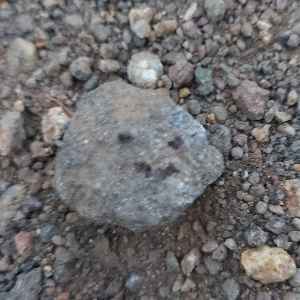Is it only ornamental? And why are they usually webbed feet (or at least they are in my experience)?
Okay so there are layers to this question:
Why does antique furniture usually have carved feet?
First, antique furniture tends to be the fancy stuff for rich people. Modest furniture made out of a few boards for the unwashed masses usually isn’t considered for preservation, but the fancy shit rich people bought got kept.
Rich people tend to like to show off how rich they are. And one way to do that up until fairly recently was through furniture. Maybe you use exotic wood, but even if you don’t do that you pay a woodworker to waste his life carving useless intricate details like pineapple newel posts or ornate table legs.
The claw-clutching-a-ball design apparently comes from China, it’s supposed to be a dragon’s foot clutching a jewel. The British adopted it in the Queen Anne period because it’s ornate, fancy and
foreignexotic. Rich people get to brag that they got their table, or a taste for the style, “during their travels.” Ball-and-claw feet specificall would fall out of fashion with the Chippendale era though fancy schmancyness would hit an all time maximum, and then the industrial revolution happened.It used to take a skilled artisan to make carvings like that with a chisel. Now, we have duplicating machines that can batch them out dozens at a time. This episode of the New Yankee Workshop shows this off. When building his Lowboy, Norm doesn’t even try to carve cabriole legs, he buys them from a company that makes them, and we get a little footage of the factory. This is why you don’t see the Zuckerbergs of the world showing off ostentatious carved furniture: ornate carvings are commodity items now. You can buy furniture with cabriole legs and arch cornices at any of those big warehouses out by the highway with a “Going out of business forever” sign out front.
Is it only ornamental?
95% yes. Speaking as a woodworker I can tell you, people overwhelmingly like looking at tapered legs. Our own legs taper, so we tend to copy that. From fancy cabriole legs to simple shaker furniture. A flared foot of any kind is mostly ornamental because again our own feet flare out, but there is a bit of a practical purpose: A larger surface area with a rounded edge is easier to slide across the floor than a small, sharply edged end of a board. It doesn’t tend to dig in as much, particularly on carpet. Also, the rounded features are more difficult to chip and splinter.
Why are they usually webbed feet?
It’s meant to be a dragon’s foot, so somewhere between reptilian and birdlike. It is also furniture, not a statue, so it’s rather stylized and not very anatomical. Edit to add, sharp, deep crevices like you get between, say, the fingers of a balled fist, are difficult to carve; The deeper and thinner the crevice, the longer, thinner and more delicate a tool is required to carve it. A craftsman may design around the limitation of the tools he has by, say, making webbed feet rather than trying and failing to do distinct toes.
I fucking love it when a specialist with relevant expertise who also happens to be a good writer gives a full on contextual breakdown that’s super accessible, well organized, well informed and a pleasure to read, on a topic I never even thought about. It’s the stuff lemmy dreams are made of.
Don’t mistake me for a scholar, now. I’m a guy with a thickness planer in his backyard shed that’s read a couple books and watched a lot of videos about building furniture. I’m confident I could defend the rank of “enthusiast.”
That said, it is something I liked about Reddit. You could post “Left-handed theoretical psycho-ornithologists of Reddit…” and you’d get at least a few credible answers.
Oh man we certainly do struggle. It’s like all the tools they make for actually doing theoretical psycho-ornithology are right handed! You know what I mean?
Me too, but the uber-pessimism spoils it for me.
I agree with all of this except the part about making things pretty being a waste. Beauty has its own value, although far too often for pieces like this it was more for bragging rights as you said.
Also plenty of craftsmen make beautiful shit without being rich. Bragging rights is a weird way to say creative effort in that sense.
Kind of my point, but a set of a dozen chairs like that isn’t so much about creativity as it is cost. Still beautiful imo, although i still prefer more minimalist styles in furniture.
Are you yourself a craftsman?
I craft many things, however I only display my wealth with ostentatious hats I obtain from a madman.
Yeah, see: when you’re looking at these highly ornate antiques, it’s not the wealth of the craftsman on display; it’s the wealth of his customer.
Well tickle me with a feather. Not every nice thing is a cynical display.
The artist never gets rich, but his efforts still costs more than the basic stuff.
The artist sometimes gets rich.
Gotta do that from time to time so the others can dream on 😁
I have been rendered incapable of seeing beauty in ostentatious displays of wealth.
The claw clutching a pearl is just one variant of countless others. We have furniture from ancient Egypt and Rome which has legs carved as animal feet, so it is not a tradition that stems from the British via China.
Decorative flourish for the most part. A lot of that old stuff was crafted by hand rather than a machine so it tends not to be designed for mass production.
A foot like this is a blend of decorative and functional, imo.
You end up with more surface area than if you had just gone with a straight column, and that helps with stability, slightly lessens the pressure.
Many modern tables or desks have… much less ornate footpad type structures, if the thing itself is quite heavy, or intended to hold a decent amount of weight.
Of course… I have no way of knowing if this old… desk? table? whatever it is, was intentionally designed with that in mind, but the function is still there, at least to some degree.
The metal ones were quite often mass produced by casting, like in claw-foot bathtubs. Probably in imitation of older artisanal pieces, which were already antiques in, say, 1910.
Casting I would say is kind of a separate deal. You can still find somewhat ornate cast things today, although more often it’s injection molded plastic coated in paint.
You could do this kind of thing with wood in a CNC machine, but more often it’s just some straight cut or moulded particle board stuff with no life in it.
Cause it’s freakin cool
Because they have legs.
…what about their legs? They don’t need those…
Looks like wood is back on the menu, boys!
Lol 😂
That design is known as “Ball and Claw”. It likely originated in the east with some symbolism, but when it went west, craftsman thought it looked cool and started copying it with minor changes.
More info: https://www.furniturelibrary.com/use-of-the-ball-claw-design-motif/
Pfft, look at this person giving an actual answer. Jokes, opinions and political rants only. /s
Also because SURVIVING antique stuff is still here because it is fancy and well made.
Plenty of cheap shit was made at the same time and long ago burned in the trash pile.
With all 4.5 children inhaling the lead paint fumes wafting off of it, or something like that. Ahh, the old days.
Because look at those cute little footsies
They are the children of Baba Yaga’s house.

Fables vibes
As for why webbed, because it was easier than carving the toes out completely, and probably more stable.
I agree that stability, durability and ease of manufacture were the likely reasons.They probably weren’t intended to be seen as webbed feet though. More likely they’re meant to depict taloned claws clutching a sphere.
Webbed toes help them swim more efficiently. As more and more furniture moved indoors, the shape of the legs and feet evolved to the drier climate. You can still find modern pieces where the look has been replicated, but the webbing tends to be decorative in nature, not functional.
There’s nothing more majestic than a galloping herd of wild chaise lounges…
Fainting goats actually evolved from the fainting couch, an evolutionary cousin to the chaise lounge.

Looser than what?
Leo’s girlfriend.
Given the trash that passes for furniture these days I expect that in 50 years or so people will still be hunting for stuff from the early 1900s or earlier to put into their place.
Maybe the supply of old furniture will dry up, and demand would rise enough to make actual quality furniture feasible again
Possibly. They’ll still be baking with the same chunky mixers, though.
This has already happened to a degree. You might have seen a log cabin but probably never a sod house. Probably not so many crank-powered tools either.
who’s the guy with the douchebaggy dark shirt
80% certain that’s Quentin Tarantino, or were you talking about Brad Pitt? Actually, I now see that they are all wearing black shirts, so maybe you’re talking about Leonardo DiCaprio?
Leonardo DiCaprio, Brad Pitt or Quentin Tarantino?
Yes.
What else would they do, hands? That would be silly.
People used to take pride in their work, and there was a time when consumers valued quality over price point.
You’re never going to walk into a charity shop and find a 100 year old chipboard IKEA wardrobe. Shit is literally made to fall apart and have to be re-bought.
The average worker wasn’t buying a table with carved feet 100 years ago. You’re experiencing survivorship bias.
I don’t know. IKEA makes some great shit. They’re not the problem imo, Wayfair and other crap is far worse
It totally depends what you buy. IKEA definitely does sell crap, so does every other furniture chain store, but not everything is crap. Really depends on what you look at specifically.
That’s just the ones that survived, the others weren’t able to run away.
From what? RUN AWAY FROM WHAT?!
It’s known that the more wealth you acquire, the stronger your foot fetish becomes.
It’s known.
Not a problem, just cast yourself in a movie if you have the urge to suck toes (or say the n word).
My n Tarantino
















